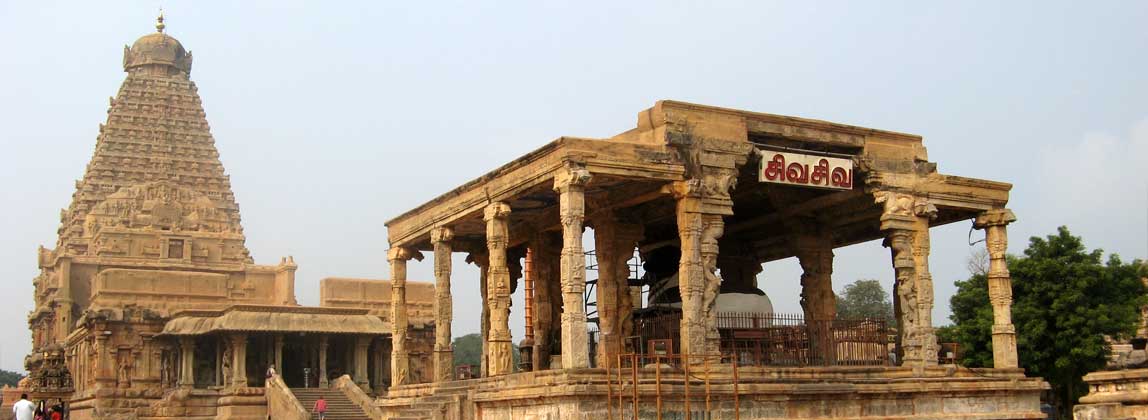


THANJAVUR - The name Thanjavur is derived from "Tanjan", a legendary demon in Hindu mythology.
Tanjore as the British called it, is extremely fertile, prosperous and scenic; it was the natural choice for capital city of one of the greatest empires of the south. Now a small city in the state of Tamil Nadu, it rose to glory during the Chola period from the 10th century to the 14th, when it came to be the centre of art and education. The Cholas built extensively during this period and 74 of their temples are still standing. As the centre of cultural development, Thanjavur attracted master craftsmen, and it still continues to produce attractive handcrafted ware. Thanjavur is still famous for its bejewelled, gold leaf Tanjore paintings, fine silk carpets, bell metal work, musical instruments, pith work and bronze sculptures.
Built by great Chola king in the 10th century it is an outstanding example of Chola architecture and is listed in world heritage. On the top of the apex of 63 metres high, a dome is said to be constructed from a single piece of granite, weighing an estimated 81 tones. The dome was hauled into place along a 6 km earthwork ramp in a manner similar to the one used by the Egyptian Pyramids. The temple has been the sense of continuous worship for over thousand years. Only Hindus are allowed inside.
(It remains closed from 1200 to 1600 hrs).
The palace near Brihadeshwara Temple is a vast building of masonry built by the Nayakas around 1550 and partly by the Maratha. Two of the palace towers, the Armoury and the observation tower are visible from all parts of the city. The palace houses an art gallery, a library and a hall of music. The art gallery occupies the Nayak Durbar Hall. It has a superb collection of Chola bronze statues from the 9th to 12th centuries. The Saraswati Mahal Library is next door to the gallery. Over 30,000 Indian and European manuscripts written on palm leaves and paper are preserved in the Saraswati Mahal Library.
(It remains closed from 1300 to 1500 hrs).